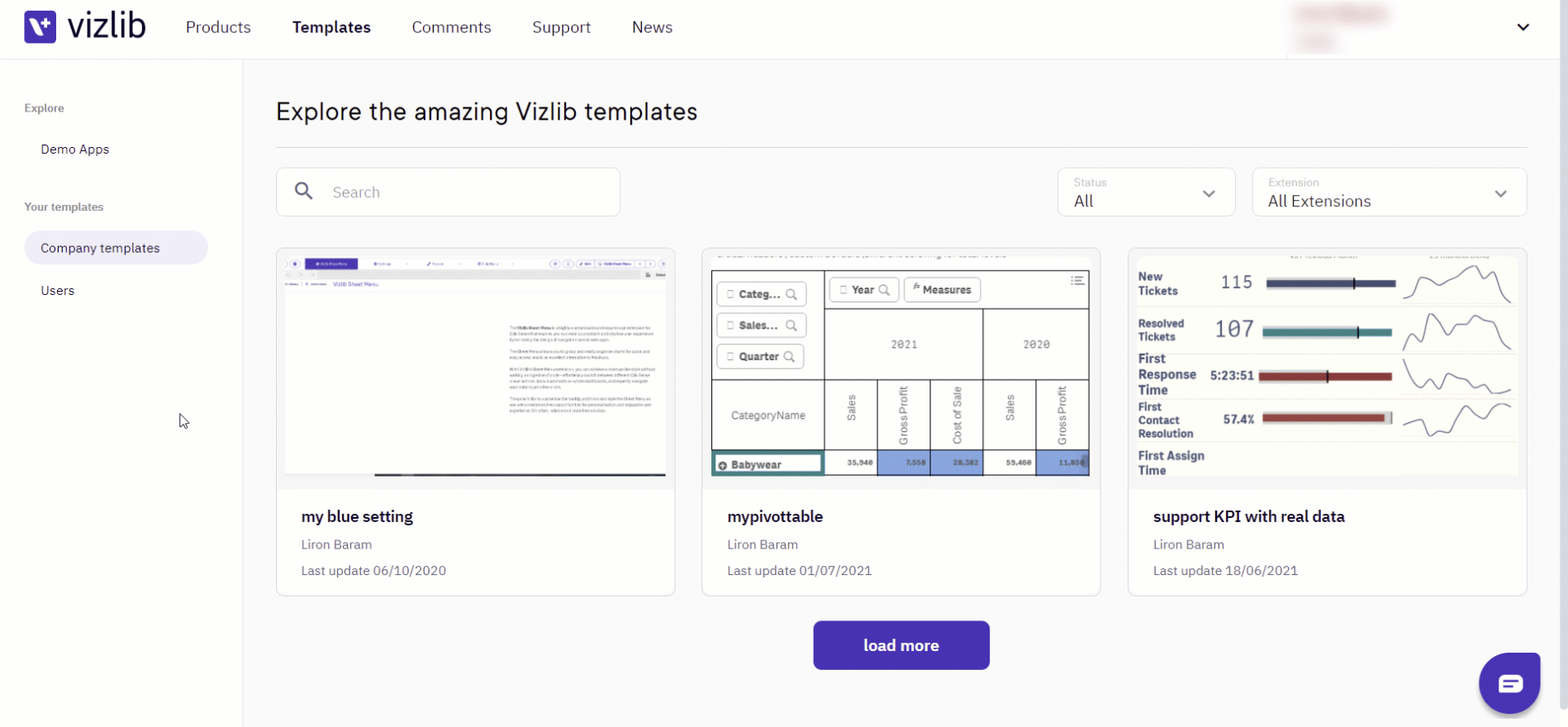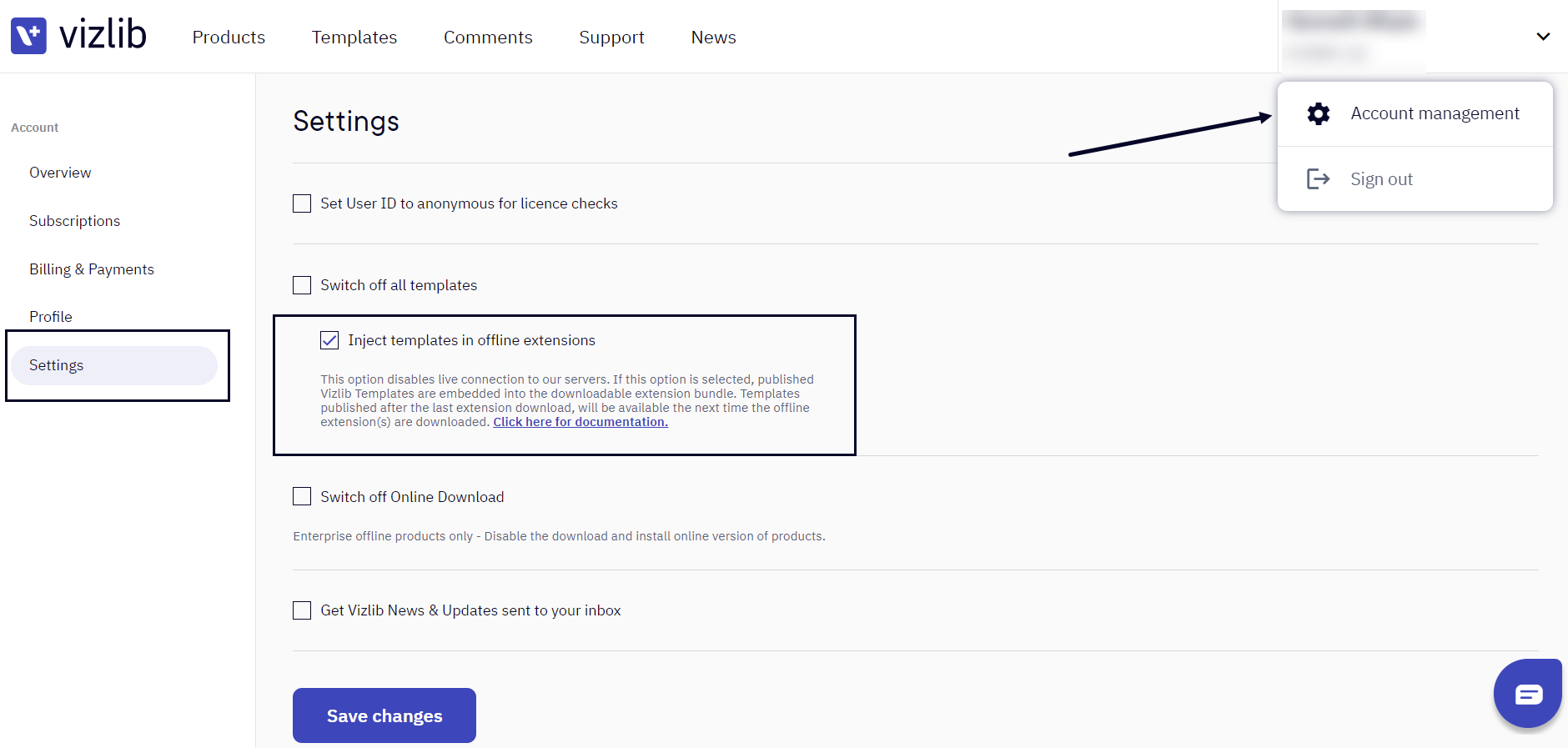Templates Overview
Vizlib Templates are pre-designed charts which have been designed to help you create and apply your own styling with just a few clicks.
The main objective for Vizlib Templates is to help generate a consistent, standardized look for Qlik Sense data visualisations which can be aligned with your company design and branding system. You can create and share templates with your entire organisation, speeding up development and maintaining visual standards across your Qlik Sense apps.
This topic contains the following sections:
Working with Vizlib Templates
All of your template information and settings are held in the Templates section of the Vizlib User Portal (Figure 1). The Explore pages contain any available Vizlib templates and Demo apps, and in Your templates, you can view the Company templates you've created for your organization and a list of the Users who can work with Vizlib Templates.

Figure 1: User Portal Templates
Creating and Saving Templates
You can create templates in the Qlik Sense hub when you're working with extensions, and make changes as you go along. Once you've got the look and feel you want, you can save the template and publish it for other users to apply. You can find a full guide on creating and saving templates here.
Managing Templates
Vizlib Templates have two distinct states - Published and Unpublished.
-
Published templates are available in your organisation’s shared space and can be accessed by the named users in your team.
-
Unpublished templates are your personal templates and can only be accessed by you and your organization’s Vizlib admin.
In the user portal, you can publish or unpublish a template, set the template as a default, edit the template name and delete the template. You can also manage the list of Users who can view any of your published templates. You can find out more about managing templates here.
Template Extensions
Vizlib Templates are currently available for the Vizlib extensions listed in Table 1.
|
Product |
Extension |
Version |
Release Date |
|---|---|---|---|
|
Vizlib Library |
Vizlib Sheet Menu |
v2.0.0 |
16th Jan 2020 |
|
Vizlib KPI Designer |
v1.9.0 |
16th Jan 2020 |
|
|
Vizlib Slider |
v1.2.0 |
16th Jan 2020 |
|
|
Vizlib Container |
v2.4.0 |
16th Jan 2020 |
|
|
Vizlib Filter |
v3.2.0 |
19th March 2020 |
|
|
Vizlib Table |
v3.7.0 |
20th March 2020 |
|
|
Vizlib Pivot Table |
v2.11.0 |
25th March 2020 |
|
|
Vizlib Button |
v1.0.0 |
14th February 2020 |
|
|
Vizlib Switch |
v1.0.0 |
30th June 2020 |
|
|
Vizlib Self-Service |
Vizlib Custom Report |
v4.1.0 |
18th May 2020 |
|
Vizlib Collaboration |
Vizlib Input Form |
v1.0.0 |
17th June 2020 |
|
Vizlib Gantt |
Vizlib Gantt |
v.1.8.0 |
23 February 2021 |
Table 1: Extensions with Template Capability
Templates in Offline Installations
If you're working with Vizlib extensions as part of an Offline installation (where the Qlik Sense Enterprise Server has no internet connection), working with templates is still possible. However, there are some other steps you'll need to follow.
-
Log into the Vizlib User Portal, click on your name in the top right of the screen, then select Account management (Figure 2).
-
Select Inject templates in offline extensions and you'll be able to download any published templates as part of the offline extension bundle.

Figure 2: Inject Templates in Offline Extensions
Note: Offline users will still need to use an Online version of the extension they're working with to create the template and publish it using a Qlik Sense development server which has internet access. It is not possible to publish templates via Qlik Sense desktop.
Related Articles: